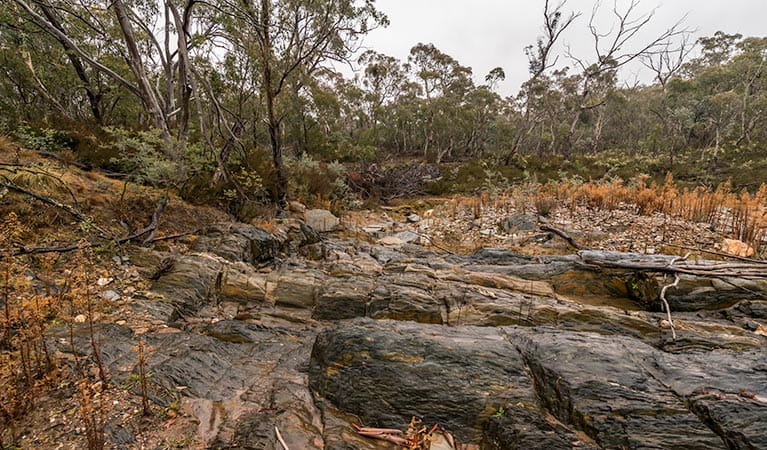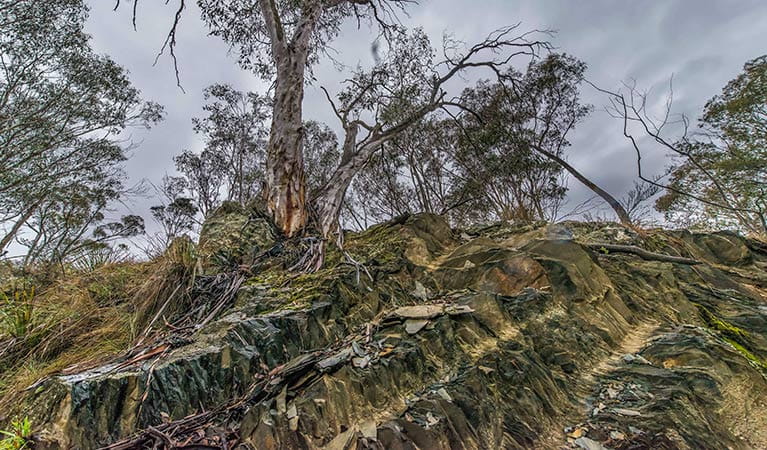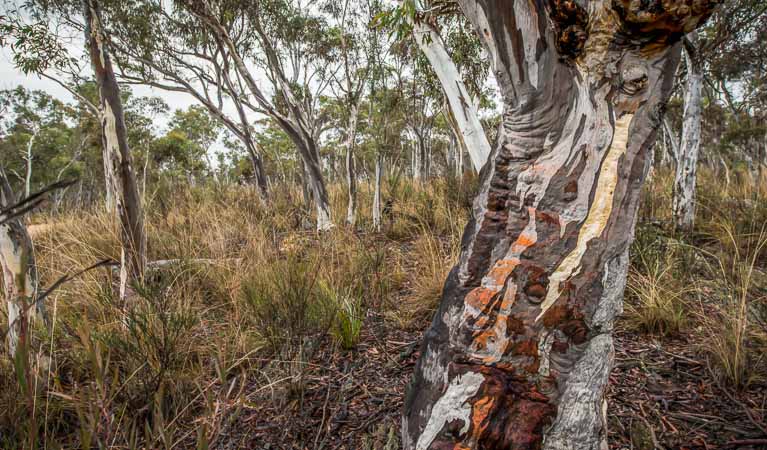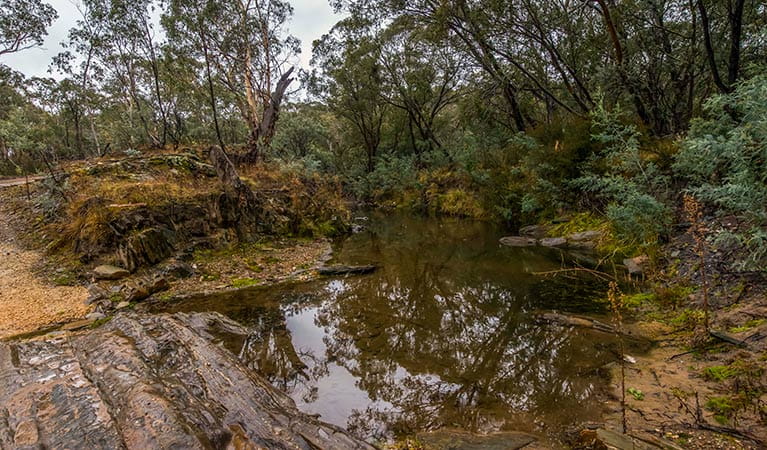Apple Box Flat picnic area
Yanununbeyan State Conservation Area
Learn more
Learn more about why this park is special
Apple Box Flat picnic area is in Yanununbeyan State Conservation Area. Here are just some of the reasons why this park is special:
A home of many gum trees

Yanunbeyan National Park is home to various environments within its landscape. The area is home to wet eucalypt forest, intermediate eucalypt forest, dry eucalypt forest and woodland, grassy woodland and riparian. Eucalyptus is the dominant plant in Yanununbeyan, and its varieties include stringybark, brittle gum, scribbly gum, peppermint gum, snow gum, ribbon gum, mountain gum, apple box, argyle apple and candlebark.
- Apple Box Flat picnic area Apple Box Flat picnic area is a grassy clearing near Queanbeyan River and is a great spot for picnicking and a spot of birdwatching in Yanununbeyan State Conservation Area.
Ngarigo territory

Welcome to Ngarigo territory. The level ground, natural clearings, spring water and forest food sources would have made Yanununbeyan an attractive area to the Ngarigo. There are recorded Aboriginal sites in Yanununbeyan, which include artefact scatters of grey and black chert and quartz. The Ngarigo spent much of their time on the tablelands, yet when temperatures dropped in winter, they would seek shelter at lower altitudes.
On a wing and a pouch

Yanununbeyan is home to many animals and a diverse range of birds. Around dawn and dusk, you're likely to see kangaroos, wombats and wallabies. At night, eastern false pipistrelle, powerful owls and squirrel gliders come out to play or hunt or be hunted.
- Apple Box Flat picnic area Apple Box Flat picnic area is a grassy clearing near Queanbeyan River and is a great spot for picnicking and a spot of birdwatching in Yanununbeyan State Conservation Area.
Times of change

Explorers came to this area in the early 1820s with the purpose of opening up new grazing lands. By the decade's end, European settlers, along with their sheep and cattle, occupied Yanununbeyan. Up until the 1930s, a horse and buggy trail ran along the rough alignment of Woolcara trail and was used as a wool route between Tinderry Station and Bungendore. Physical remains of European settlement in Yanununbeyan include fences, bridle trails and shepherd's huts. On Woolcara trail near The Springs, look for hand-built road foundations.